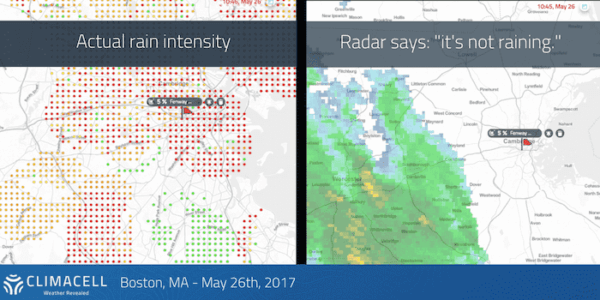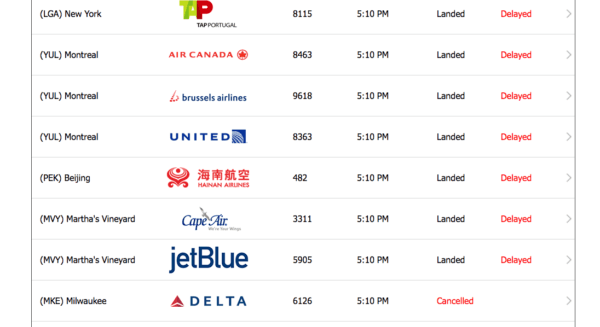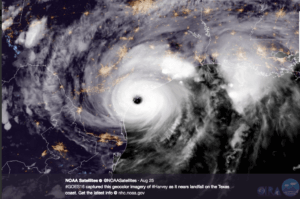When you think of weather preparedness, you’re likely imagining weather disasters like hurricanes, blizzards, or tornadoes.
While large-scale weather events pose major problems for supply chain operations, you’re far more likely to get tripped up from everyday weather events.
That’s why we spoke with Bill Hamlin, a supply chain expert with over 35 years of experience, including having served as the COO of ITS ConGlobal, where he now serves as an advisor. He knows that smooth supply chain management comes from daily planning and anticipation.
“When I do my job well, I’m managing the safety of personnel, equipment, facilities, and cargo, which allows for the proper planning and execution of our operations. From the executive team down through to the regional managers and site managers, we’re getting them accustomed to looking at the forecast, anticipating weather, and using that to protect themselves, their staff, and the company.”
While you probably have a plan in place for once-in-a-blue-moon weather events like Nor’easters, floods, or forest fires; it’s more likely you’ll encounter black ice, high winds or waves, or a heat wave on a regular basis. You might be overlooking these three areas in your supply chain operations.
Here is what Bill Hamlin has learned in his extensive career in supply chain management about how weather and operations interact on a daily basis, and why he sees weather intelligence as the most important piece of the operational puzzle.
1. Manage Staffing and Safety
Understanding everyday weather helps you plan for staffing and hiring needs more effectively, so everyone stays safe. That might be calling ahead to make sure you have enough snow removal equipment for an incoming storm or ordering enough bottled water for employees during a heat wave.
“A lot of companies don’t have a protocol about preparation and awareness when it comes to weather. It needs to be part of the daily fabric. It’s knowing there could be black ice during a winter morning, even if there isn’t a major storm. You don’t want the team climbing up on rail cars in that situation, even if it’s not actively snowing,” Hamlin explained.
The more you know, the more easily you can move staff around, anticipating where delays might occur from traffic or other weather patterns and where you might need more staff to prepare the site for weather events.
At ITS ConGlobal, every shift change includes a weather briefing and specific safety tips, so the team knows what’s going to happen in the next six or eight hours, whether that’s wind, sun, snow, or rain.
“When you know what you need to make people aware of and the actions they need to take, it sends a strong message that you care and you want to make sure they’re protected, so they feel comfortable coming to work each day. The more you’re prepared the more you can stay open, take care of your customers, and keep your people safe.”
2. Protect Company Assets
You can’t rely on a piecemeal approach when it comes to everyday weather. Checking the forecast and looking at potential risk and impact should become part of daily operations, so you can be prepared not only to keep employees safe, but to protect company and customer assets.
Operating a crane in high winds isn’t just unsafe for your employees — doing so can cause millions of dollars in damage to your property and equipment. Losing shipping containers, communications equipment, or heating and cooling systems to water, wind, or storm damage can be easily avoided with the right preparation.
“When you look at sophisticated communication equipment, if you know you have lightning strikes in your area, you can make sure you disconnect or otherwise protect your infrastructure. It’s a little thing, but it makes a big difference to the bottom line,” Hamlin said.
By understanding that a storm is approaching in advance, you can also minimize your team’s wasted time – shutting down a site quickly, and getting up and running again just as quickly.
3. Customer Communication
No trucker wants to show up to the port gate to closed gates, especially in bad weather.
Understanding detailed forecasts gives you the power to say, “Don’t come between 8:00 AM and 10:00 AM tomorrow because of high winds. Come at 12:00 PM instead so we’ll be prepared.”
That way, you can set expectations with customers around weather-based delays, operational hours, and timing to get ahead of any issues.
“You can create that stickiness with your customer because you’re going above and beyond to help them manage their time and money, giving them a positive touchpoint instead of complaining about arriving when you were closed and couldn’t get serviced or because there are delays,” Hamlin explained.
No one wants to waste time and money. Upfront communication and real-time weather alerts make it more seamless for everyone.
Create a Weather Safety Playbook with Tomorrow.io
ITS ConGlobal works weather information directly into their safety playbook. Using Tomorrow.io’s insights, they equip their managers from each business unit with action plans for emergency situations and everyday forecasts so they always know what to do.
“By using a product like Tomorrow.io, someone can go in and assess risks. What’s going on in my area? How can I prepare my shift? You don’t want it to be one of those binders that sits on the shelf and afterward you go, ‘Oh, yeah, well, I guess I should’ve done this or I should’ve done that.’”
You’ll always have to deal with the weather. Daily weather awareness opens up safety, efficiency, and cargo velocity. Ultimately, weather intelligence helps you deliver a better customer experience, staff more effectively and safely, and protect and prepare your facility, equipment, and overall operation.
“As an operator, if something impacts safety, efficiency, or cargo velocity, I want to know about it. Tomorrow.io is something that can protect people, facilities, equipment, cargo, and in my 35-year career, that’s what matters most.”
Tomorrow.io contextualizes weather data and forecasts that context, making it possible for you to understand weather patterns and predict not only the weather, but also the impact to your business every single day. Granular insights provide you with an action plan to maximize output and reduce waste all while protecting valuable assets, while hyper-local forecasting and real-time weather enable planning and quick decisions to reduce delays and increase safety for your team.
















